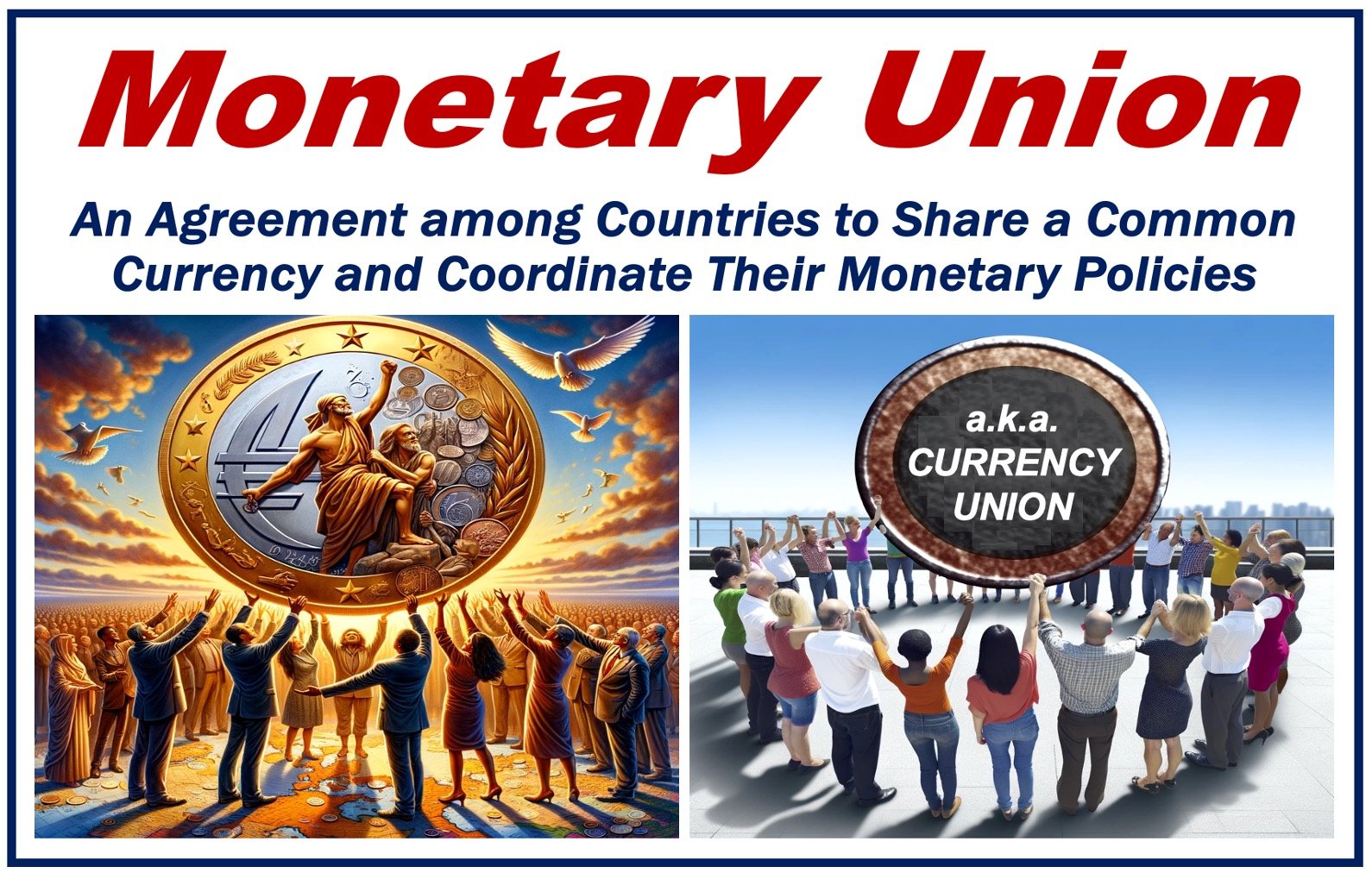What is a Monetary Union?
When two or more countries share a common currency and coordinate their monetary policies, they have achieved a Monetary Union, also known as a Currency Union. The aim is to facilitate imports, exports, and other economic transactions between member countries by removing exchange rate fluctuations and currency conversion costs.
Member countries create a central bank that controls their overall monetary policy. It also maintains foreign exchange reserves and sets interest rates.
The International Trade Council has the following definition of Monetary Union:
“An agreement between two or more nations to use a common currency and coordinate their monetary policies is known as a monetary union. This entails the creation of a central bank that controls the overall monetary policy for the member nations, sets interest rates, and maintains foreign exchange reserves.”
“Monetary unions can promote economic integration and lower the risk of currency volatility by establishing a stable and predictable currency environment.”
The Euro Area – an example of a monetary union
The Euro Area, known informally as the Eurozone, consists of 20 European Union (EU) countries that have adopted the euro as their official currency. In other words, these twenty countries are members of a monetary union called the Euro Area.
Not all EU member states are in the Euro Area, either because they want to hold onto their national currencies or they have not met the necessary criteria.
Sweden and Denmark, for example, are both EU members, but they were not interested in monetary union. They decided to hold onto their currencies.
The following countries are in the Euro Area: Austria, Belgium, Cyprus, Estonia, Finland, France, Germany, Greece, Ireland, Italy, Latvia, Lithuania, Luxembourg, Malta, Netherlands, Portugal, Slovakia, Slovenia, and Spain.
The following EU countries are not in the Euro Area (the euro is not their official currency): Bulgaria, Czech Republic, Denmark, Hungary, Poland, Romania, and Sweden.

The pros and cons of monetary union
Pros:
- Eliminates exchange rate risks, encouraging trade and investment.
- Enhances price transparency across countries, increasing competition.
- Reduces transaction costs for businesses and travelers.
- Centralizes monetary policy for more stable economic management.
- Promotes greater economic stability through shared policies.
Cons:
- Members lose control over their own monetary policy.
- A central authority takes over your country’s sovereignty over currency.
- Challenges arise from binding diverse economies under one policy. For example, if inflation in our country is higher than the others, you cannot devalue your currency to make exports more competitive.
- Limited use of fiscal policy to respond to local economic shocks.
- Economic problems in one member state can spread to others.
Other examples of monetary unions
- West African Economic and Monetary Union (WAEMU/UEMOA):
Shares the West African CFA franc among eight West African countries. - Economic and Monetary Community of Central Africa (CEMAC):
Uses the Central African CFA franc across six Central African countries. - Eastern Caribbean Currency Union (ECCU):
Eight Caribbean islands use the Eastern Caribbean dollar. - The Caribbean Netherlands:
Bonaire, Sint Eustatius, and Saba use the US dollar.
Conclusion
A monetary union is a form of economic integration that offers participating countries many advantages in terms of financial stability and trade. However, they must also give up some degree of economic independence and work closely together to coordinate their monetary and fiscal policies.
The success of a monetary union depends on how compatible the member nations’ economies are and how willing they are to work together for the collective good.

